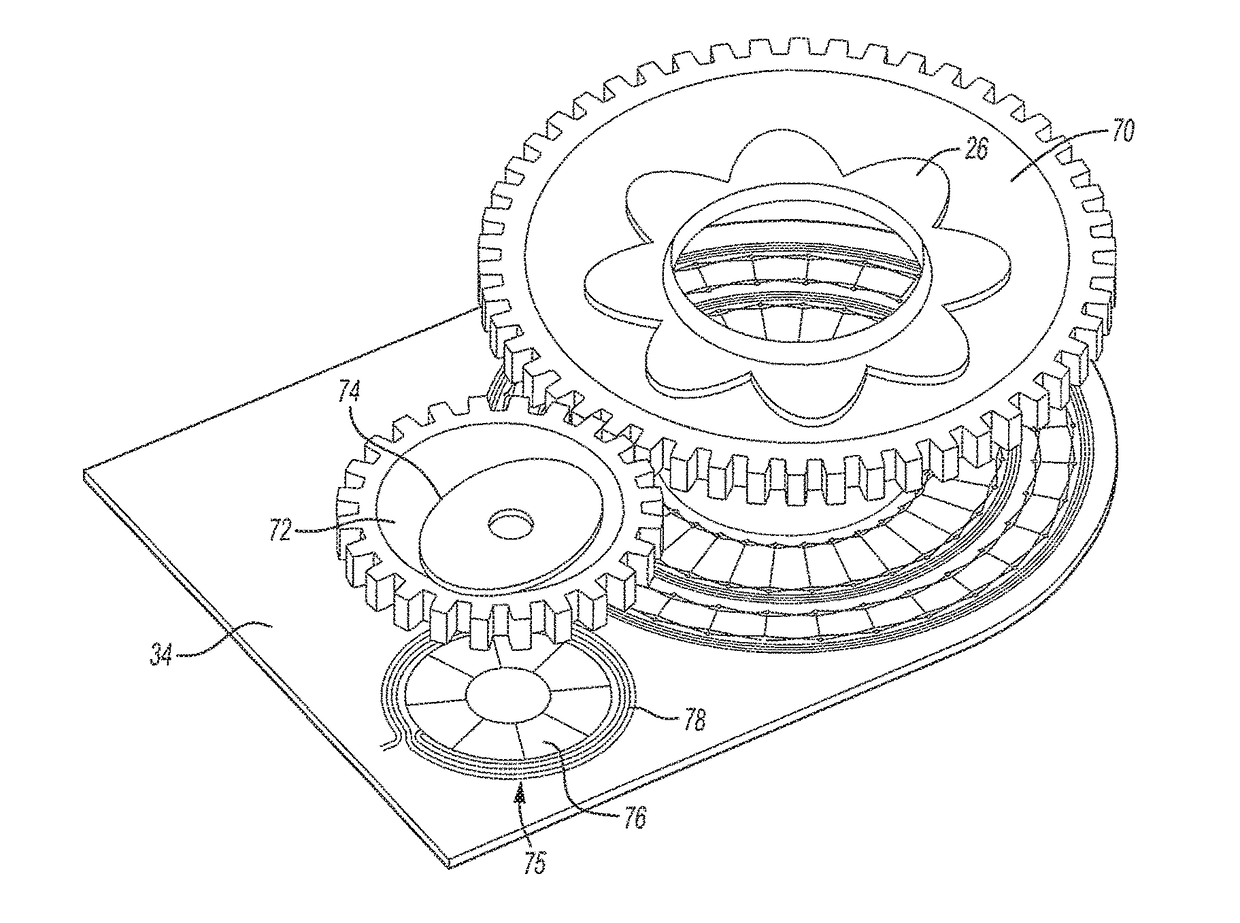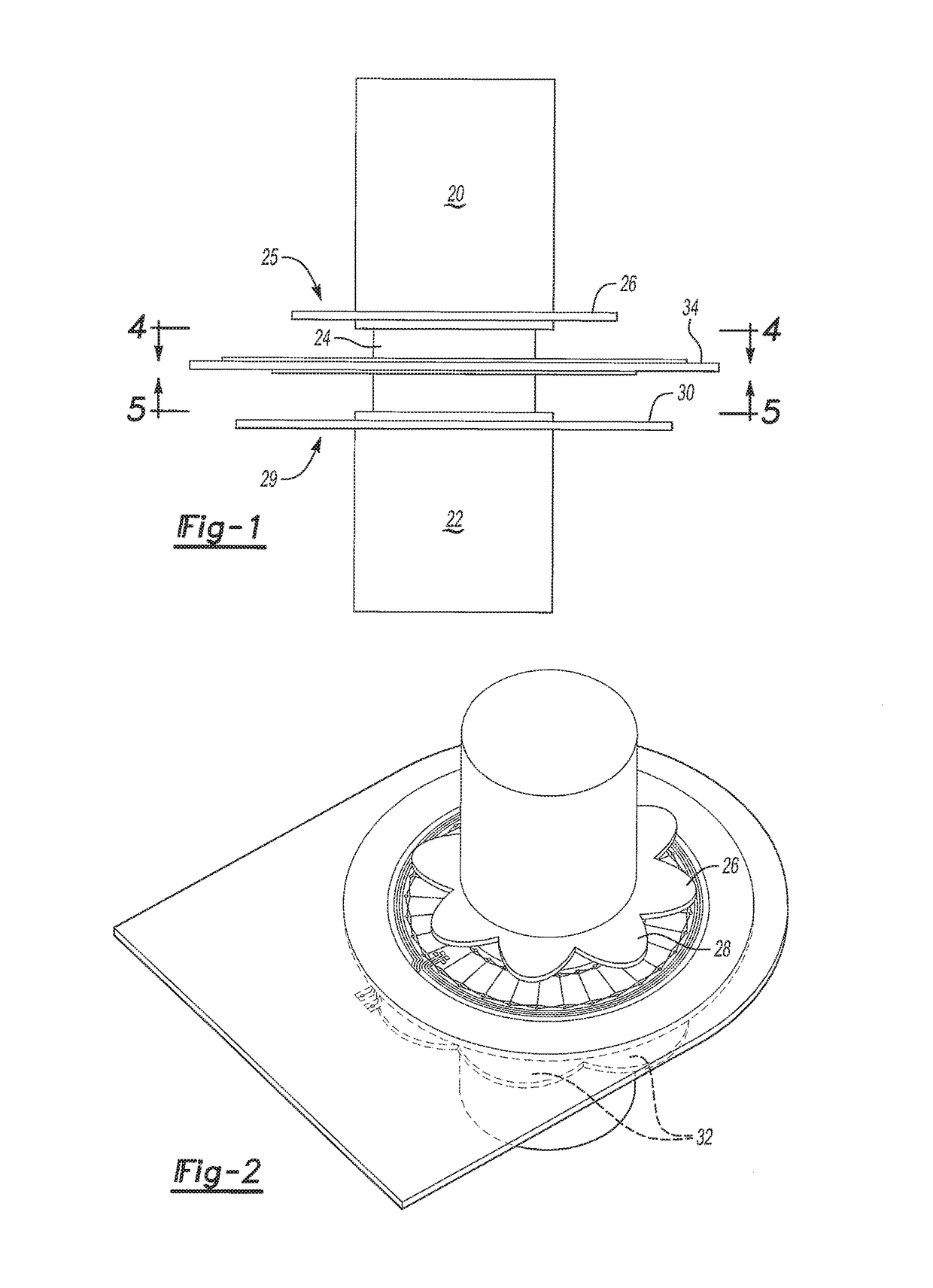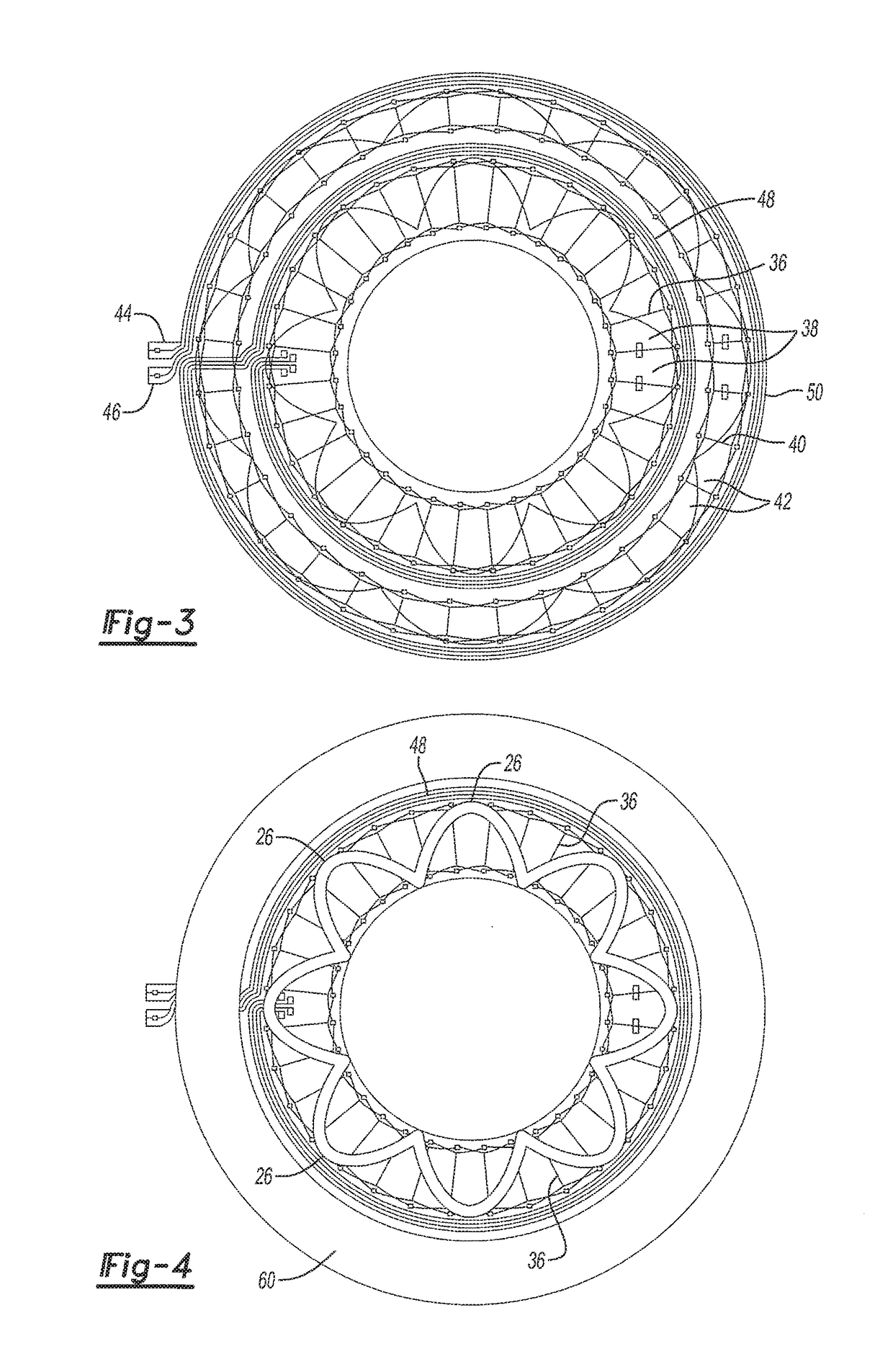Inductive steering torque and angle sensor
a technology of torque and angle sensor, which is applied in the direction of force/torque/work measurement apparatus, instruments, transportation and packaging, etc., can solve the problems of requiring additional computing resources, two inductive position sensor in the same area interfere with each other, and it is difficult to extract the torsion angle from the two outputs of the receiver coil, so as to achieve the effect of eliminating interferen
- Summary
- Abstract
- Description
- Claims
- Application Information
AI Technical Summary
Benefits of technology
Problems solved by technology
Method used
Image
Examples
Embodiment Construction
[0029]With reference first to FIG. 1, a portion of a steering wheel mechanism of the type used in automotive vehicles is shown. The steering wheel mechanism includes an input shaft 20 which is attached to the steering wheel for the vehicle. An output shaft 22 is coaxial with the input shaft 20. The output shaft 22 is connected to the steering linkage for the vehicle to provide the actual pivoting of the vehicle wheels.
[0030]The input shaft 20 and output shaft 22 are connected together by a torsion bar 24. This torsion bar 24 permits a limited amount of angular deflection between the input shaft 20 and the output shaft 22 depending upon the torque applied to the steering wheel. Typically, the angular deflection between the input shaft 20 and output shaft 22 rarely exceeds 20 degrees and more typically is in the range of 10 degrees or less.
[0031]With reference now to FIGS. 1 and 2, a first inductive sensor 25 includes a first electrically conductive rotor or coupler 26 is attached to ...
PUM
| Property | Measurement | Unit |
|---|---|---|
| electrically conductive | aaaaa | aaaaa |
| frequency | aaaaa | aaaaa |
| rotation | aaaaa | aaaaa |
Abstract
Description
Claims
Application Information
 Login to View More
Login to View More - R&D
- Intellectual Property
- Life Sciences
- Materials
- Tech Scout
- Unparalleled Data Quality
- Higher Quality Content
- 60% Fewer Hallucinations
Browse by: Latest US Patents, China's latest patents, Technical Efficacy Thesaurus, Application Domain, Technology Topic, Popular Technical Reports.
© 2025 PatSnap. All rights reserved.Legal|Privacy policy|Modern Slavery Act Transparency Statement|Sitemap|About US| Contact US: help@patsnap.com



